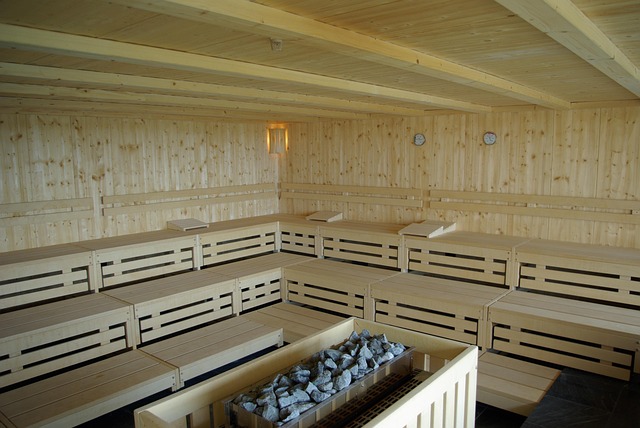Holistic principles emphasize the interconnectedness of musculoskeletal, neurological, and circulatory systems for optimal posture and alignment solutions. By addressing these interactions, practitioners can correct imbalances caused by modern lifestyle factors like stress, sedentary behavior, and mental health issues. Holistic practices integrate exercises (e.g., planks, yoga), manual therapy, mindfulness, and lifestyle changes to promote balanced, sustainable solutions for better posture and alignment at home, without formal training or professional help. These methods complement targeted movements, core strengthening, stretching, proper diet, and environmental considerations for long-term natural balance and improved overall well-being.
In our quest for optimal health, exploring holistic approaches to restore natural body posture and alignment is essential. This article delves into the interconnectedness of mind and body, guiding you through effective strategies for achieving balance. We’ll uncover the foundational principles of holistic practices, explore the impact of mental health on physical alignment, offer practical posture and alignment solutions at home, and examine the profound effects of diet, exercise, and environment on achieving harmonious body balance.
- Understanding Holistic Principles for Optimal Posture and Alignment
- Exploring Mind-Body Connection: The Role of Mental Health in Physical Alignment
- Natural Solutions for Improving Posture and Alignment at Home
- The Impact of Diet, Exercise, and Environment on Restoring Body Balance
Understanding Holistic Principles for Optimal Posture and Alignment

Understanding holistic principles is key to unlocking optimal posture and alignment solutions. Unlike conventional methods that often focus on isolated parts of the body, a holistic approach considers the interconnectedness of various systems—musculoskeletal, neurological, and circulatory—that collectively contribute to our overall stance. By examining how these systems interact, practitioners can identify underlying imbalances and address them effectively.
This comprehensive perspective recognizes that good posture isn’t merely about achieving a specific aesthetic; it involves maintaining proper alignment to support vital functions. For instance, correct posture enhances nerve conduction, improves blood flow, and reduces strain on joints. By integrating exercises, manual therapy, and lifestyle modifications tailored to individual needs, holistic practitioners aim to create balanced and sustainable posture and alignment solutions.
Exploring Mind-Body Connection: The Role of Mental Health in Physical Alignment

In today’s fast-paced world, many individuals struggle with poor posture and misalignments due to stress, sedentary lifestyles, and mental health issues. Exploring the mind-body connection is a crucial step in holistic approaches to restoring natural body alignment. Mental health significantly influences physical alignment; stress and anxiety can lead to chronic tension and misaligned postural habits. By addressing underlying mental health concerns, individuals can better access their body’s innate ability to correct itself.
Holistic practices such as mindfulness meditation, yoga, and cognitive behavioral therapy (CBT) play a pivotal role in this process. These techniques help individuals cultivate awareness of their thoughts and feelings, fostering a deeper connection with their bodies. As mental clarity improves, so does the ability to recognize and release physical tension, ultimately leading to better posture and alignment solutions.
Natural Solutions for Improving Posture and Alignment at Home

Maintaining good posture and alignment is essential for overall well-being, but many people struggle to find time for formal exercises or professional help. Fortunately, there are numerous natural solutions for improving posture and alignment that can be easily incorporated into daily routines at home. One simple yet effective method is to practice mindful movements throughout the day. This involves being conscious of your body positioning while sitting, standing, or performing everyday activities. For instance, maintaining a neutral spine while seated or keeping shoulders relaxed and back during tasks like reading or working on a computer can significantly contribute to better alignment.
At-home exercises focused on core strengthening and stretching can also play a pivotal role in posture correction. Exercises like planks, bridges, and yoga poses such as the cat-cow stretch help engage muscles responsible for supporting the spine and maintaining proper alignment. Additionally, utilizing props like exercise balls or yoga blocks during workouts can enhance postural awareness and challenge the body to maintain correct form. Incorporating these natural solutions into your routine not only promotes better posture and alignment but also fosters a deeper connection with your body.
The Impact of Diet, Exercise, and Environment on Restoring Body Balance

The pursuit of holistic body alignment goes beyond mere physical exercises; it encompasses a multifaceted approach that integrates diet, exercise, and environmental factors. Diet plays a pivotal role in restoring natural body balance by providing the necessary nutrients to support muscle health and overall bodily functions. A balanced diet rich in vitamins, minerals, and antioxidants not only strengthens muscles but also promotes healing and flexibility, which are crucial for maintaining optimal posture and alignment solutions.
Exercise, particularly targeted movements aimed at strengthening core muscles and improving mobility, is another critical component. Regular physical activity, including yoga, Pilates, and specific stretching routines, helps to realign the body, relieve tension, and enhance joint health. By addressing muscle imbalances and promoting proper posture and alignment solutions, these exercises create a foundation for long-term natural balance and well-being.
Holistic approaches to restoring natural body alignment involve a multifaceted strategy that intertwines mental and physical well-being. By understanding the mind-body connection, adopting natural solutions at home, and considering the impact of diet, exercise, and environment, individuals can effectively address posture and alignment issues. Integrating these principles into daily life offers long-lasting benefits for overall health and vitality.
